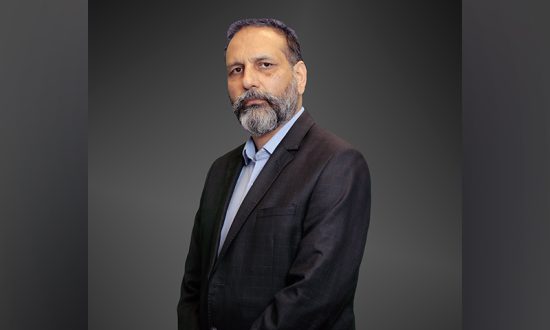Praveen Dhabhai, COO of Payworld , who joined the organisation in January 2007 in its early stage of inception, has pioneered the company’s spectacular entry into the unbanked world with assisted e commerce within the short period of eight years. Praveen is the brain behind the unprecedented success in this sphere of financial services of Payworld, part of the US$ 2 billion Sugal and Damani Group which has enjoyed persistent success with him on board. Praveen, with his vast experience in the financial services world, brings with him a sincerity of purpose, resolve and intellect. He has led the Payworld team with his sharp business acumen and astuteness to deliver their best, outstripping any better performance before.
It has been seen that financial inclusion plays an important role in the growth of developed and developing countries. Financial inclusion helps the society to grow. It targets at providing ease and affordable access for financial products and services to people. From a growth perspective, the main concern for any developing nation is creating progress to the life of low income rural population. It is globally considered as a critical indicator of development and well-being of society. In India financial inclusion has taken a slow route. It was 2008 when Financial Inclusion as a policy initiative entered the banking dictionary and only after the recommendations of the Rangarajan Committee in 2008 it began to attract the attention of stakeholders. It was the time when banks realised the significance of connecting with more people for business growth.
During this time only, Indian policymakers identified the key determinants that would lead to successful financial inclusion of low-income rural populations equally. Usually, the timeframe of financial services included provision of basic savings accounts, and access to adequate credit at affordable costs to vulnerable groups such as the excluded sections of the society and low-income households. One of the larger objectives of financial inclusion is to upgrade the life of the poor community and bring them out of the net of exploitative moneylenders. The existence of COVID-19 crisis has also reinforced the need for increased digital financial inclusion. It includes the formation of the cost-saving digital tools to reach the rural population of India.
Below are some of the major factors responsible for the financial inclusion in India, especially the rural population and poor.
Awareness
Today, India is taking a step ahead and most of the sectors are adapting new technologies which are helping them to grow at a decent pace. Mobile and internet accessibility in small rural areas has created a platform for people to learn about new technologies and current trends. It helps the rural population to manage their finances better. Further to this, the government’s Digital Bharat initiative has been found to be one of the useful tools to connect maximum. Technology has made the life easier of the people living in tier 2 and 3 cities. As per a report, mobile money continues to grow in all regions of India. As per the analysis by IMF Financial Access Survey, in low-income economies, there are twice as many mobile money accounts than bank accounts per 1,000 adults. Irrespective of having an account at a financial service provider, small and medium-sized businesses are mostly excluded from formal borrowing.
Education/ Financial Literacy
It’s been proven that financial literacy reflected consumers’ educational level, also, the usage of financial literacy in FinTech influenced digital financial inclusion. It increases the likelihood of using digital financial products and services to improve financial access. However, financial literacy alone did not influence financial inclusion, but the combination of financial literacy and internet usage could improve better financial access.
Digital India: an increased influence technology
Digital technologies have a huge potential in India and many business leaders are leveraging it to bring resilience to rural economies. There are several other unorganised sectors along with the banking and financial services, such as the rural travel sector, that can benefit from the technological solutions built with a rural focus. These solutions can bridge the pre-existing gap in financial inclusion. It can bring about comprehensive development in the rural economy by providing employment, livelihoods and financial freedom as well as the necessary services like assistive travel bookings, hastel free EMI’s, among others. Additionally the rural youth can harness the benefits of the technologies which have been created for the rural population. They can foster productivity and economic growth, create livelihoods and attain financial freedom without having to migrate away from their homes.
A major shift in the policies
A huge shift has been seen in the financial inclusion from 2014 which brought a transformation with the roll out of ‘Pradhan Mantri Jan Dhan Yojana (PMJDY)’. PMJDY has been created to ensure accelerated access to various financial services like basic savings bank accounts, affordable, need-based credit, remittances facilities, and insurance and pension for excluded sections, etc.
The above factors are some of the solutions to create a whole ecosystem for the expected Financial Inclusion in India. The strategies have to be built around these determinants to promote inclusion and thus, a clear picture of these determinants is a must have for strategy and policy makers. Though the factors may be somewhat similar across the nation, their significance and impact on financial inclusion varies majorly from one geographical area to another.


